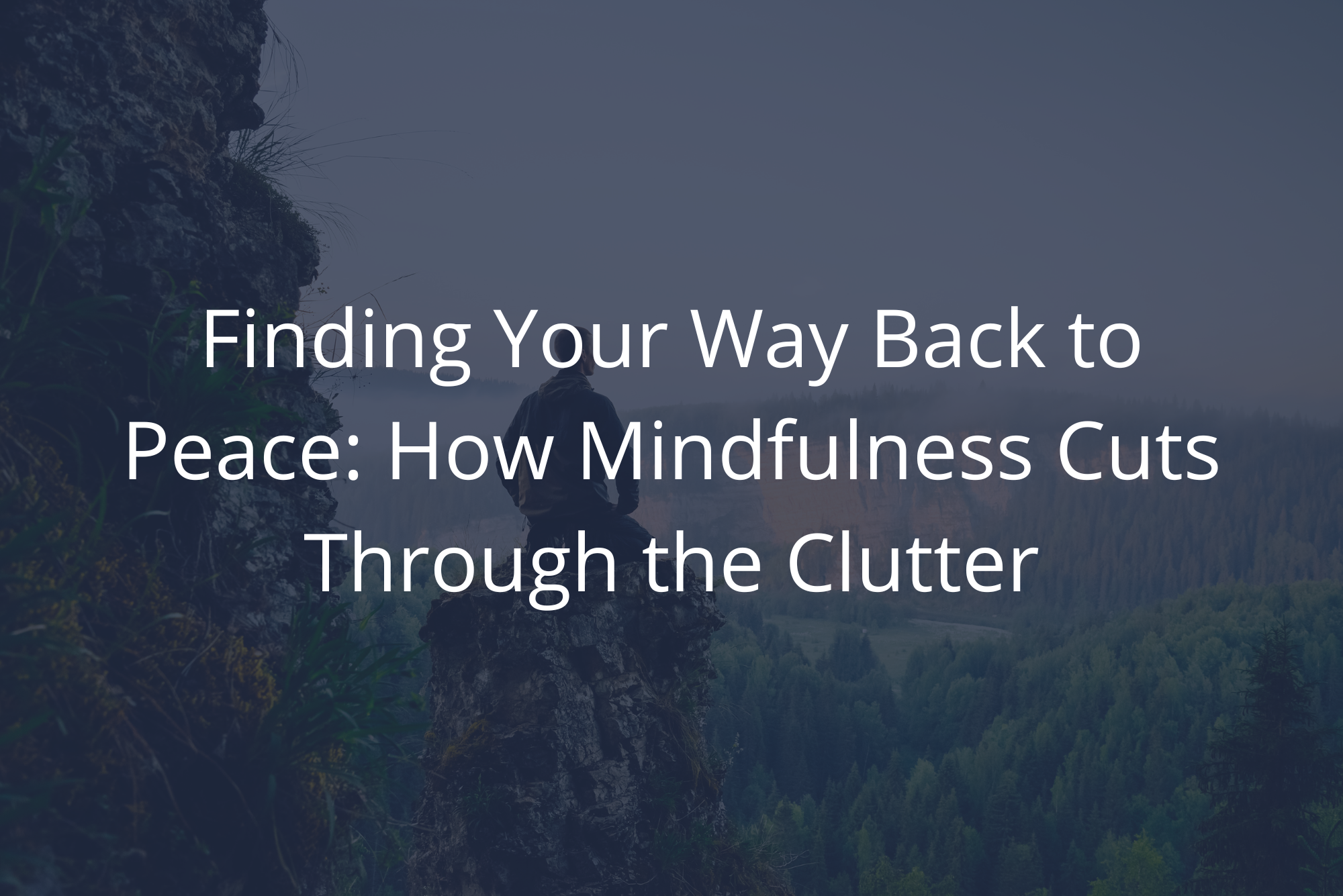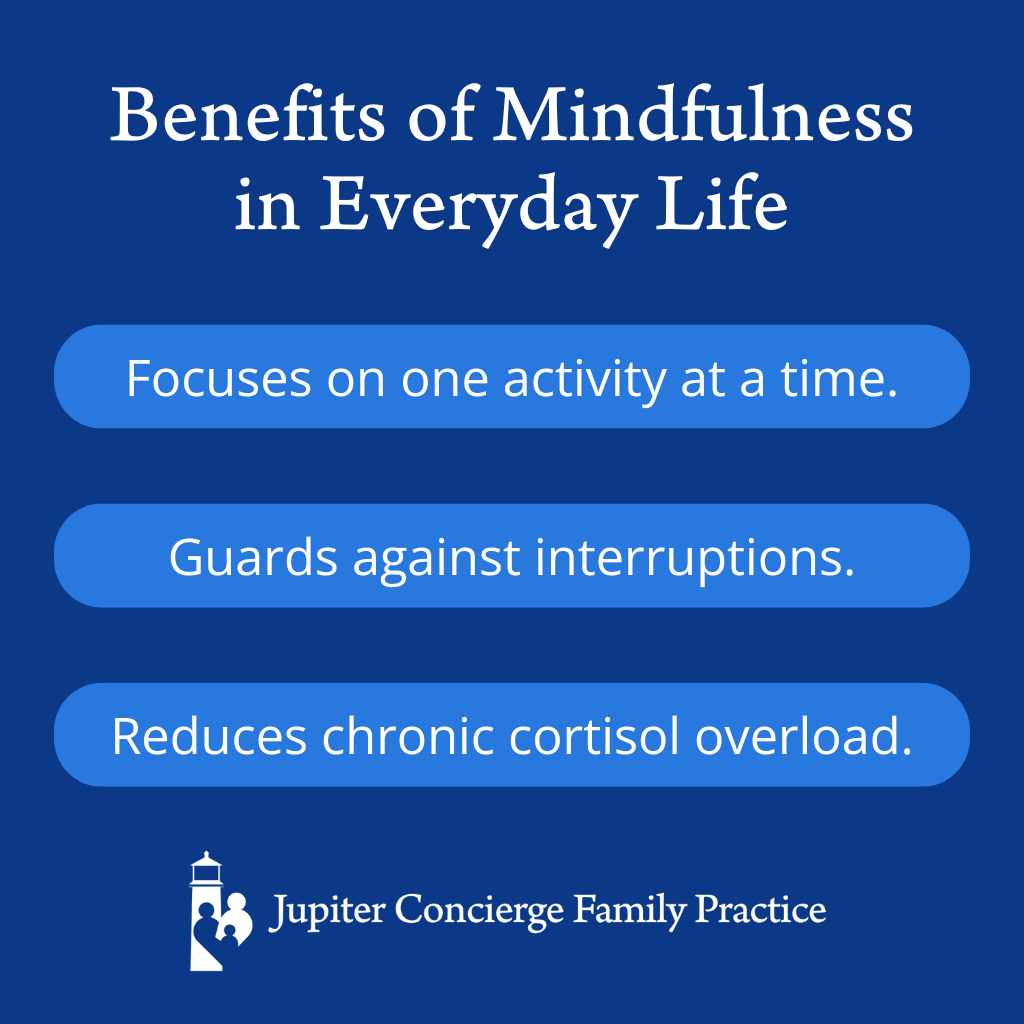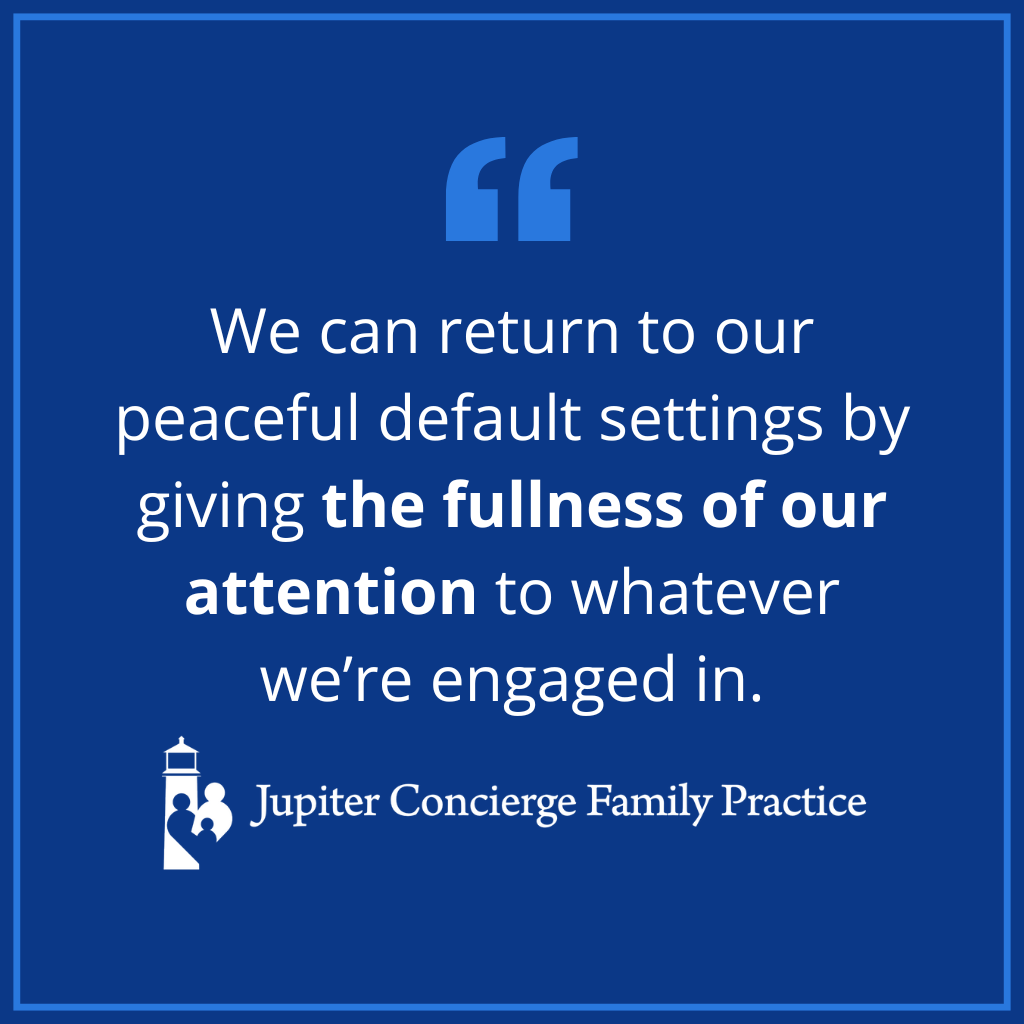
Surprising though it may be, as humans, our default setting is one of peacefulness. This may seem like an alien state of being, but it truly does come naturally to us.
In the modern day, however, our natural peacefulness gets blocked, shouldered out, by the many innovations, conveniences, and entertainments we’ve devised for ourselves.
While these factors aren’t necessarily bad in and of themselves, they introduce a certain amount of clutter to our minds and systems — clutter that covers over our natural peaceful state.
The good news is that we can clear the clutter and access our peacefulness through mindfulness. The even better news? This mindfulness approach is likely simpler than you’re imagining. Let’s take a look.
Modern Environments: Where the Wild Things Lounge
Before we go into how to recover your natural state of peacefulness, I want to first address that, in fact, most of us don’t experience a wonderfully peaceful state most of the time.
Imagine, for example, that you’re on vacation in a natural setting and you feel at peace. But why is that?
It’s because you’re feeling at home in the wild, and your nervous system is relaxing.
Whether it’s a cat in the yard or a deer in the woods, animals don’t really think about what they’re doing. They go by instinct, within the parameters of their environments.
Animals tweak their surroundings to the best of their abilities, but we are the only species to have drastically and intentionally manipulated our environment for our benefit. Whether it’s manufacturing products, mining minerals, creating spacecraft, eating fruits out of season, or embarking on intercontinental travel, humans engage with many, many things that are not “natural” on a daily basis.
When we get caught up in this common, but unnatural, lifestyle, we tend to experience a disconnect. And that disconnect surfaces as anxiety.
Physiologically, this anxiety stems from our cortisol system overreacting. The function of cortisol is to help us make split-second survival decisions. We commonly think of this as fight or flight. Do we stay and face the aggressor, or do we get out of there?
The cortisol system isn’t designed for chronic overload. It isn’t meant to function as a response to worrying whether we’ve saved enough to pay our income tax at the end of the year, or if our kids will get into that certain college, or any other of the other stacks of concerns that face us.
I don’t say this to trivialize or invalidate these worries and challenges. They are important, and they’re a reality of modern life. But given that reality, our bodies must have the downtime they need to get us back to our peaceful roots. And that’s where mindfulness comes in.
Mindfulness: Fully Minding Your Own Mind
When people think of mindfulness, they often think of meditation. But that’s not what I mean here. I’m suggesting that we can return to our peaceful default settings by giving the fullness of our attention to whatever we’re engaged in.
This type of mindfulness is about minding your own mind, and its simplicity means you can bring it to bear in any and all activity. In whatever you’re doing, you can think about that one thing, not about something else.
For example, when you’re at work, have your mind there with you. Don’t obsess about what’s going on at home. And when you’re at home, be at home. Whenever possible, don’t bring work home with you.
If you do have to bring work home, designate a cut-off time after which work is off limits. This provides you a more balanced, effective life, which of course leads to more happiness and joy.
Clear Out the Clutter
Another way to think about mindfulness is as a process of decluttering.
Chances are when you hear the word “clutter,” you get a mental picture of physical stuff that’s blocking a path. Stacks of junk, papers, and other miscellaneous mess.
It can be useful, though, to think about non-tangible clutter. This comes in the form of behaviors and thought patterns.
Let’s say you’re speaking with a friend. Your friend asks you a question, and you answer it. Then they comment, and you comment on their comment. That’s a meaningful conversation.
By contrast, let’s say you’re speaking to your friend and you get a text. What do you do? The healthiest thing to do (in most cases) is to ignore the text and allow the in-person encounter to go uninterrupted. Protect the peacefulness of communicating in person with a friend. Don’t allow interruptions to clutter it up.
Or, perhaps it isn’t your phone. Perhaps you and your friends’ minds are elsewhere, even though you’re speaking with each other. You share a thought with your friend, and your friend replies with an unrelated thought of their own. This isn’t a meaningful conversation; it’s a disjointed episode of talking but not communicating.
More Practical Ways to Introduce Mindfulness
The more you laser-focus on whatever you’re doing, the better the results. Consider the difference between the usual approach and a mindful one in these simple activities:
Exercise
If you’re on a treadmill and reading a book, you’re not being mindful. You’re entertaining yourself while you’re doing another activity.
When exercising, try appreciating how your body moves, how the balance occurs, how the muscles contract, and how your breath goes in and out. This has another benefit as well; breathing properly makes exercise easier and leads to better outcomes.
Eating
When you’re sitting down for a meal, be mindful of what you’re eating. Rather than scrolling on your phone, be aware of the different textures, flavors, and experiences you’re having with the food.
Engaging with your cell phone during a meal — or even having your phone on the table — invites distraction into what should be a relaxing activity. Consequently, cortisol gets involved (even from that phantom vibration you thought you heard) and activates your fight-or-flight mode, stealing your peace.
For everyone’s sake, I recommend a no-cell-phone rule at the dinner table. Once you break that digital dependency, you’ll likely enjoy the meal more, and your body will appreciate the lack of interruption.
When your fight-or-flight (sympathetic) nervous system shuts off, your rest-and-digest (parasympathetic) nervous system kicks in. This gives you a peaceful time to appropriately digest the meal… and, ultimately, to lead a healthier life.
Social Interaction
When you’re interacting with friends or family, be mindful of their responses and connect with them. Be aware of their feelings. Look at the nuances and their facial expressions, and participate in the topic they’re bringing up. Instead of planning your next line, listen to them when they’re speaking and process what they say.
Flex Your Mindfulness Muscle
This kind of mindfulness is available to everyone. Please don’t give up if it feels difficult. Mental presence is a skill. Like any new skill, it needs to be honed and practiced.
I often think of mindfulness as a muscle, one that has grown weak for most of us. We can’t expect it to power-lift right away, but its stamina will increase with use. And the benefits are, without a doubt, worth it.
You only get one life; give it the attention it deserves. That is to say, yours.

Dr. David Rosenberg
Dr. Rosenberg is a board-certified Family Physician who obtained a BS in Chemistry at Georgia's Mercer University in 1983 and a medical degree from the University of Miami in 1988. He completed his residency in Family Medicine at The Washington Hospital in Washington, Pennsylvania, in 1991 and then practiced Emergency Medicine at Palm Beach Gardens Medical Center for two years. In 1993 he started private practice in Jupiter.
Dr. Rosenberg has been married to his wife Mary for 38 years and they have three grown children together. Some of his interests include being a huge baseball fan, sailing, snow skiing, self-development, and learning to play piano.


